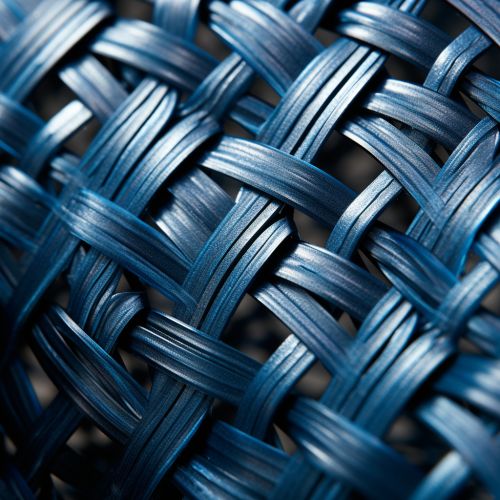Glass Fiber Reinforced Polymer
Introduction
Glass Fiber Reinforced Polymer (GFRP), also known as fiberglass, is a composite material made of a polymer matrix reinforced with glass fibers. The fibers may be randomly arranged, flattened into a sheet, or woven into a fabric. The plastic matrix may be a thermoset polymer matrix—most often based on thermosetting polymers such as epoxy, polyester resin, or vinylester—or a thermoplastic.


Composition and Manufacturing
The manufacturing process of GFRP involves the combination of the polymer matrix and the glass fiber reinforcement. The glass fibers are made from various types of glass depending upon the fiberglass. E-glass ("electrical" glass), S-Glass ("structural" glass), C-glass ("chemical" glass), and A-glass ("alkaline" glass) are some types of glasses that are used in the production of glass fibers. The polymer matrix is usually a thermosetting resin such as epoxy or polyester.
Properties
GFRP has several properties that make it a popular material in various industries. These properties include high strength, low weight, and resistance to heat, chemicals, and weather. It is also non-conductive and transparent to radio frequency and microwaves. These properties make GFRP an ideal material for applications in the aerospace, automotive, marine, and construction industries.
Applications
GFRP is used in a wide range of applications due to its versatile properties. It is used in the manufacturing of boats, automobiles, sports equipment, and aircraft parts. In the construction industry, GFRP is used in the production of panels for doors and windows, as well as in the reinforcement of concrete structures. It is also used in the telecommunications industry for antenna enclosures and radomes.
Advantages and Disadvantages
Like any material, GFRP has its advantages and disadvantages. Its advantages include its high strength-to-weight ratio, its resistance to corrosion, and its insulating properties. However, GFRP also has some disadvantages. It is not as strong as steel, it can be brittle, and it can degrade over time due to exposure to sunlight.
Future Developments
Research is ongoing to improve the properties of GFRP and to find new applications for this material. One area of research is the development of GFRP composites with enhanced mechanical and thermal properties. Another area of research is the use of GFRP in sustainable construction, as it is a recyclable material.
